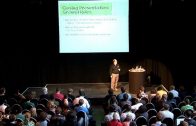This talk highlights the evolution of the research function at Grubhub, from the days of a small and scrappy startup to the public company you know today.
When getting a business off the ground, research is typically directed towards iterative product improvement. As the company expands (different markets, customer segments, and offerings), so does the scope and complexity of its research needs. Building an adaptable research function that is able to grow and mature with the business requires experimentation and iteration of its own.
During these transitions, key questions emerged. How can research be a shared service that benefits more than just the product team? How can we explain ourselves to the organization so that they know how to work with us? How do we reduce the time it takes to do critical exploratory studies without compromising quality? How does research impact and inform marketing decisions? What is the difference between a qualitative UX researcher and a marketing researcher? Are focus groups really the devil or are they actually a useful methodology?
To address the issues, the Grubhub research team developed some unique methodologies. Slice, the in-house restaurant worked by Grubhubbers, was created to encourage cross-departmental collaboration, inspire creativity, and build empathy for restaurant employees. The research function was split into two teams with one side focused exclusively on the product experience (UX) and the other on the full lifecycle of the customer across all touchpoints (CX).
UX and CX research are still new and often misunderstood in the corporate context. Through extensive trial and error, Grubhub landed on a solution that has made research a critical part of the decision making process throughout all departments.
Access Rhiannon’s slides here: slideshare.net/secret/hu7TTpcull1zyJ














